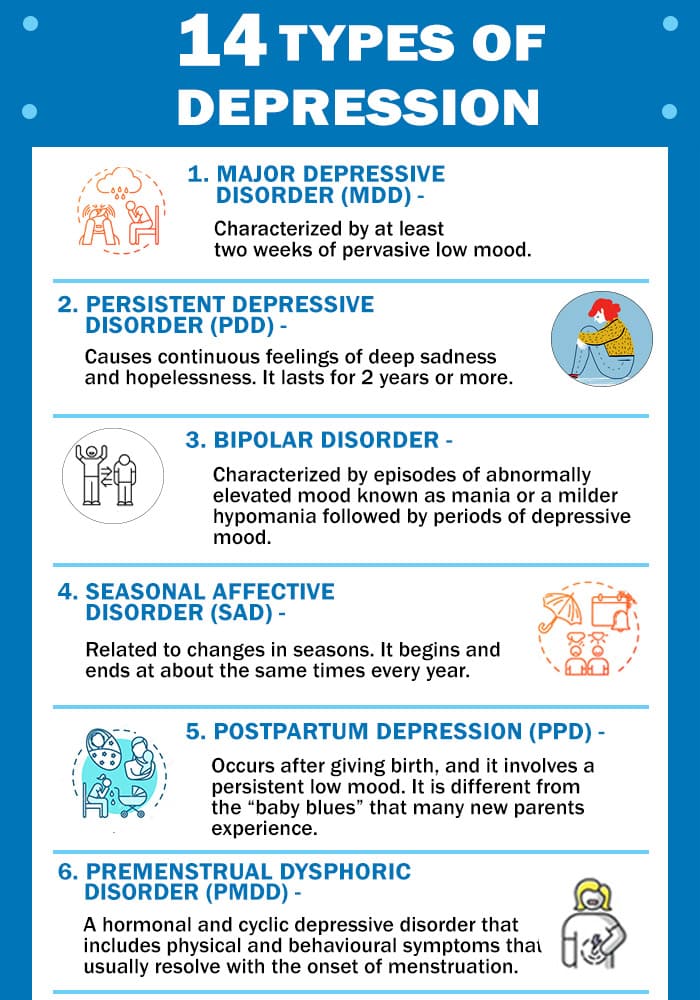Which of the Following Best Describes Persistent Depressive Disorder
It may be less severe than major depression but as the name suggests it lasts longer. Which of the following best describes bipolar I disorder.

The Difference Between Persistent Depressive Disorder And Major Depression Bridges To Recovery
Double depression is a combination of these two specific types of depressive disorders.

. Intense depression followed by normal mood. The characteristic symptom of chronic depression is low mood or sadness that lasts for a serious period of time. People with dysthymia often find it difficult to be happy even on typically joyous occasions.
Maggie has been suffering with persistent depressive disorder for several years and has sought treatment on several occasions. Major and persistent depressive disorders are two common forms of depression. Asked Apr 26 2020 in Counseling by casanchez.
Persistent Depressive Disorder Dysthymia According to the Diagnostic and Statistical Manual of Mental Disorders Fifth Edition Persistent Depressive Disorder Dysthymia represents a consolidation of the DSM-IV-defined chronic major depressive disorder and dysthymic disorder commonly referred to as Dysthymia 1. Persistent depressive disorder also called dysthymia is a depressed mood that lasts for at least two years. Which of the following best describes dysthymia.
3 points A severe intermittent form of depression A form of depression that affects biological functions such as appetite A mild chronic form of depression A form of depression that is very responsive to electroconvulsive therapy A mild consistent form of mania. It occurs twice as. D Which of the following statements is true about cross-cultural and gender differences in posttraumatic stress disorder PTSD symptoms.
A person with PDD has a sad dark or low mood and two or more other symptoms of depression. Which of the following statements best describes the epidemiology of major depressive disorder. Those with this disorder experience a depressed mood almost every day.
Healthcare providers used to call the condition dysthymia or dysthymic disorder. Disturbance in mood that is a direct result of physiological effects of substance abuse. Persistent depressive disorder dysthymia is a form of depression.
A severe intermittent form of depression c. A form of depression that affects biological functions such as appetite d. Before age 13 girls and boys are equally likely to have depression.
D The only distinction is in the timing and frequency of the. It tends to be of low intensity. While the symptoms of Persistent Depressive Disorder are very similar to Major Depressive Disorder they are usually less acute as symptoms tend to ebb and flow over a long period of time more than two years.
A mild chronic form of depression b. B A type of mania more common in dysthymic patients. Full manic cycles with possibility of depression.
Which of the following best describes hypomania. Persistent depressive disorder PDD is mild or moderate depression that doesnt go away. Dysthymia Persistent Depressive Disorder Dysthymia also known as persistent depressive disorder is a long-term form of depression that lasts for years and can interfere with daily life work and relationships.
Some people living with persistent depressive disorder might be. The symptoms last most of the day on most days over a long period of time. Sleeping too much or too little is indicative of Persistent Depressive Disorder but not Premenstrual Dysphoric Disorder.
Persistent depressive disorder is a pretty new clinical diagnosis that describes long-term feelings of sadness and listlessness that dont quite meet the diagnostic criteria for major depressive. It is not a common inmate experience. 0803 LC Which of the following best describes persistent depressive disorder.
It is equally common in men and women. Persistent depressive disorder is as the name suggests a chronic low-grade depression that lasts for at least two years. Persistent depressive disorder known as dysthymia or low-grade depression is less severe than major depression but more chronic.
O A African Americans have higher rates of PTSD compared to Whites Hispanics and Asian Americans. A person diagnosed with persistent depressive disorder may have episodes of major depression along with periods of less severe symptoms but symptoms must last for two years to be considered persistent depressive disorder. The condition Maggie is experiencing is best described as _____.
Learn about the differences including symptoms and treatment methods here. About a month ago she developed more severe symptoms of depression which have been maintained almost daily. Many people with this type of depression describe having been depressed as long as they can remember or they feel they are going in and out of depression all the time.
It is the most common psychiatric disorder worldwide and affects far more women than men. Which of the following is TRUE of major depressive disorder. A A type of mania that alternates with depression.
Major depressive disorder MDD is as its name implies a more severe form of depression that involves most of the DSM-5 depressive symptoms. Persistent Depressive Disorder previously known as Dysthymia is a continuous and chronic form of depression. Periods of mild mania followed by mild depression.
Major depressive disorder is less severe and more chronic than persistent depressive disorder. A form of depression that is very responsive to electroconvulsive therapy.

What Is The Difference Between Persistent Depressive Disorder And Major Depressive Disorder Youtube

Comments
Post a Comment